Wouldn’t it be wonderful if we had the time to delve deeply into those topics that we’ve always been naturally curious about? Would you choose to study a particular time period? A historical figure? An animal, weather phenomenon, or something else entirely? Today we have Nichole, Arkansas homeschooling mom of 2, here showing us what it looks like to tailor your children’s homeschooling lessons around their interests and passions. Interest-led learning is a customized and creative way of teaching and one of the things that makes homeschooling so incredibly unique and special.
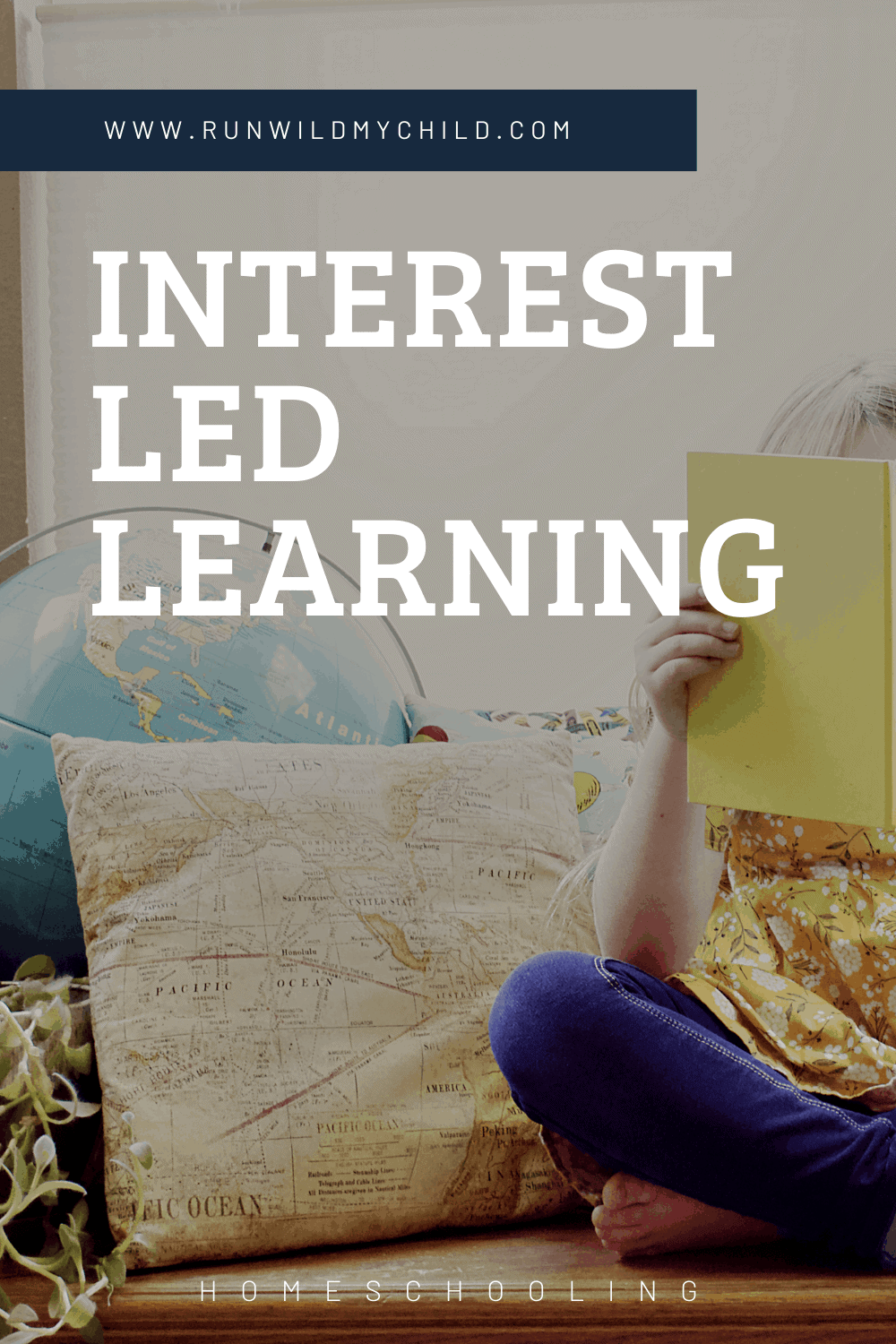
Education is not the filling of a pail, but the lighting of a fire” – William Butler Yeats
Homeschooling doesn’t have to be boring
No really, homeschooling doesn’t have to be boring and driven by a curriculum you bought online. Homeschooling can be fun and personalized and engaging for everyone. How? Interest-led learning!
For anyone not familiar with this concept, interest-led learning is the idea of following your children’s curiosity where it takes you and crafting homeschool lessons around their interests. You may also hear it called delight-directed learning, passion-oriented learning, or rabbit trailing (you follow the rabbit trail of your interests).
Every kid has something that he or she is naturally interested in or curious about. As a homeschooling mom, you can take note of those topics and help a child learn about that interest. You can integrate your children’s passions into your homeschool rhythm if you are willing to support and nurture their growing interests. But sometimes you have to think outside the box.
The big box of curriculum
I’ve now been homeschooling for six years. It’s strange to think that I’m no longer a newbie at this. When we first decided to homeschool, I did what most people do and jumped right into internet searches. This was seven years ago, before homeschooling became a front and center hot topic. My internet searching and asking around led me to “the big box.”
Boxed curriculum, as they’re called, are an all in one approach where all of the materials you will need can be ordered in one large order from one curriculum company. While these can be phenomenal resources for many families, I learned very quickly that it was not going to work for us. I spell out how I realized this and what I did to discover my style in HERE. What I quickly realized was that if I wanted to teach my children, I needed to hold their interest. But, how do you hold a child’s interest? Curiosity and passion.
Enter: interest-led learning

The lighting of a fire
In my research, I stumbled on the educational philosophies of Charlotte Mason, Waldorf, unschooling, unit study, and countless others. All of these things kept bringing me back to what I felt pulling on my heart. I desperately wanted the education of my children to be the lighting of a spark, rather than a dousing of a flame. My wish? That their curiosity would carry them through childhood and they’d step out into adulthood, unscathed and unmarred by my attempts to put round pegs in square holes.
In our homeschool and our family, we believe in life-long learning and a permanent curiosity for the world around us. We believe that raising our children with the ability to know how to learn and to be constantly learning, are some of the keys to successful adulthood. Interest-led learning is a great way to keep that spark for curiosity alive and fuel their passions and interests.
You cannot teach a person anything; you can only help him find it within himself.” – Galileo
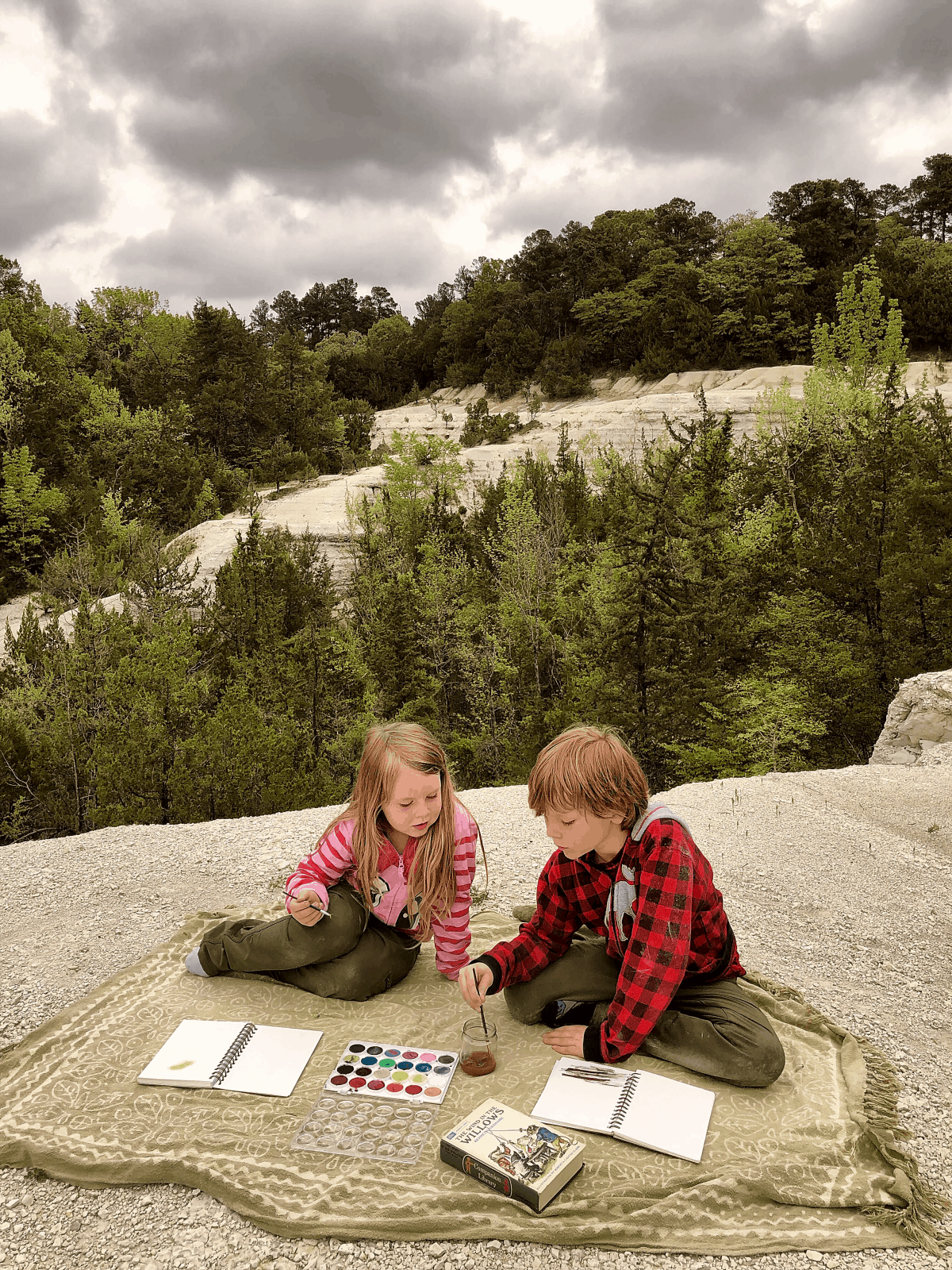
Pancakes and spacewalks
One of the first interest-led learning studies I put together for my kiddos was a space study unit. My sweet five-year-old boy was completely enthralled by outer space. We read all the books, we assembled our own solar system, we did the Oreo cookie moon phases, we did it all. And it was glorious!
My most favorite memory was a 5 AM pancake party to watch a spacewalk happen LIVE at the International Space Station. My children have always been early risers, but we woke extra early to watch the spacewalk happen. What a marvel of modern technology. I enjoyed chocolate chip pancakes with my children in our kitchen at home, while watching with stars in our eyes as the astronauts floated in space, with the beautiful orb of Earth just in view behind them. A few months later we took a family vacation to NASA headquarters in Houston, to seal in what we had learned and to stoke the flame a little more.
I’ll give you a little hint, dear friends, if you can keep your own curiosity and sense of amazement intact, it will influence and inspire your children. Never be afraid to learn new things and share that awe with your children.
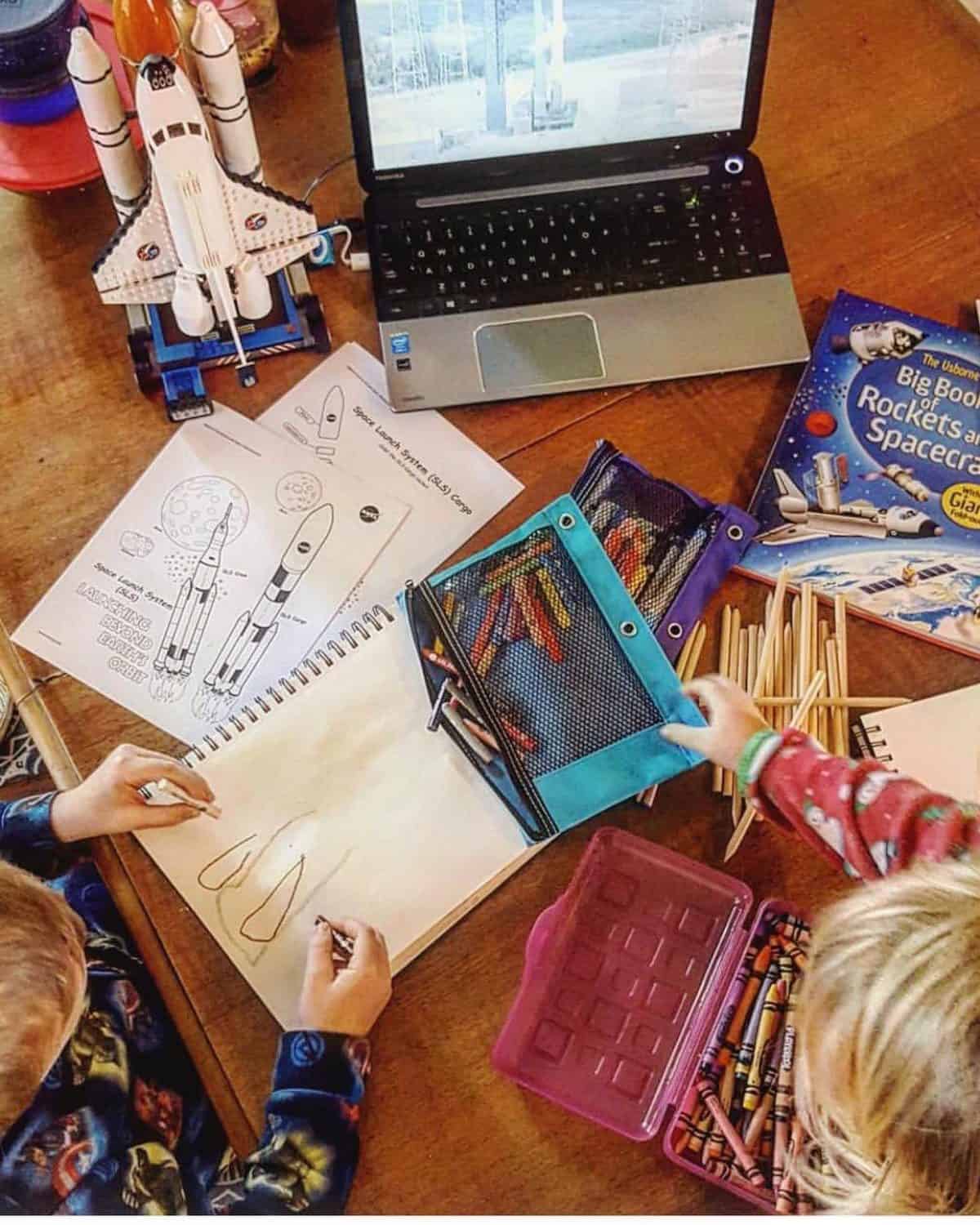
Study through story
One of our favorite methods to learn comes from the Charlotte Mason philosophy – the idea of slowly working our way through beautiful stories. “Living books,” as they are called. The first slow march we did was to follow a little wooden canoe through the Great Lakes in the story Paddle to the Sea. One chapter per week, so we could also learn the flora, fauna, geography, and history surrounding the chapter. The following fall, while a part of a family vacation, we visited a park in Nipigon, Ontario dedicated to that story. We stood on the shores of Lake Michigan and recalled the adventure we had as we slowly studied a book. It was an incredible experience and you can read the full story HERE.
We also studied the Santa Fe Trail through Tree in the Trail. We followed it up with a road trip to visit family (read about it HERE), making stops along the way to solidify and complement what we had learned. Misty of Chincoteague was an easy favorite and I’ll never forget frolicking in the Atlantic waves just after we spotted a mother and foal on Assateague Island National Seashore. Again, you can read all about that trip HERE.
These trips and family vacations are not what brought the learning to life. That was our own special way of celebrating our learning journey and what we’d accomplished. What brought the interest-led learning to life was a slow and steady pace through beautiful stories that my children connected with. That connection is what makes all the difference.
Tell me and I forget. Show me and I remember. Involve me and I understand.” – Chinese Proverb
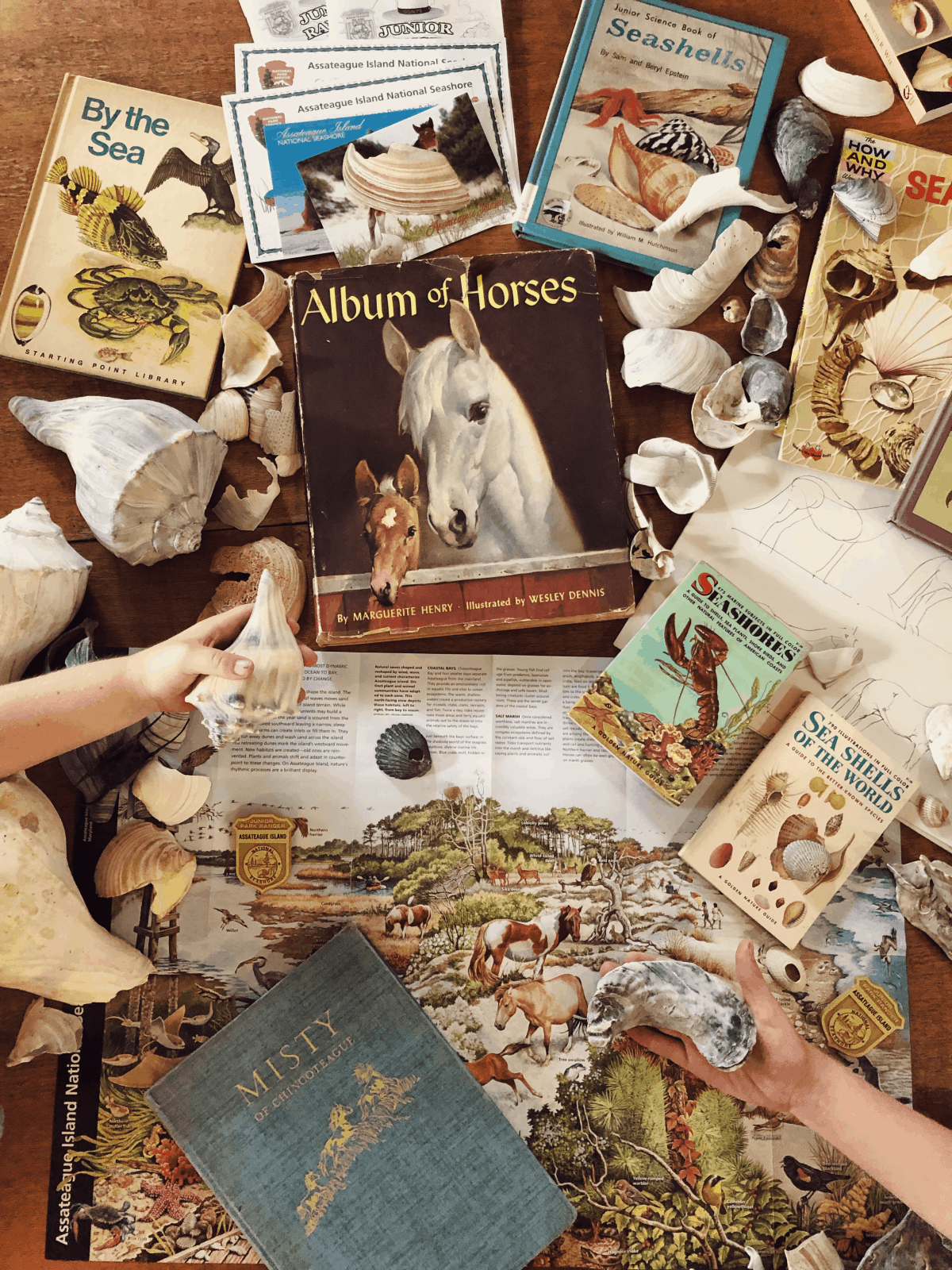
What is interest-led learning?
Interest-led learning really is as simple as it sounds. It can be applied to nearly any schooling philosophy you use. It’s a mindset and an approach to teaching your children. You recognize that they are whole persons, with their own passions and interests. Then, you take the time to gently uncover what sparks their curiosity. This requires a habit of presence and noticing, seeing what makes your children light up.
Do you have a hard time paying attention if you’re not interested in what’s being discussed? Do you struggle to listen if the topic is not personally relatable to you? It’s the same for your children. But, with interest-led learning, they’re doubly excited about the topic and learning because it’s tailor-made for them!
Finding resources
The most important concept with interest-led learning is this: YOU are in charge of finding what makes your children come alive and then you get the opportunity to use that as a tool to stoke their passion for learning.
While that may sound intimidating, thanks to the wonders of modern technology, we are quite literally swimming in homeschooling resources. Never before have there been so many incredible resources, many of which are available right from your phone or computer. An expert in interest-led learning and one of the most inspirational homeschoolers I know is Julie Bogart of Brave Homeschooler fame. Another one of my favorite resources for inspiration is the Wild + Free community, where you can connect with other homeschooling families in your area for support, camaraderie, and resources.
It is… nothing short of a miracle that the modern methods of instruction have not yet entirely strangled the holy curiosity of inquiry; for this delicate little plant, aside from stimulation, stands mainly in need of freedom; without this it goes to wreck and ruin. It is a very grave mistake to think that the enjoyment of seeing and searching can be promoted by means of coercion and a sense of duty.” – Albert Einstein
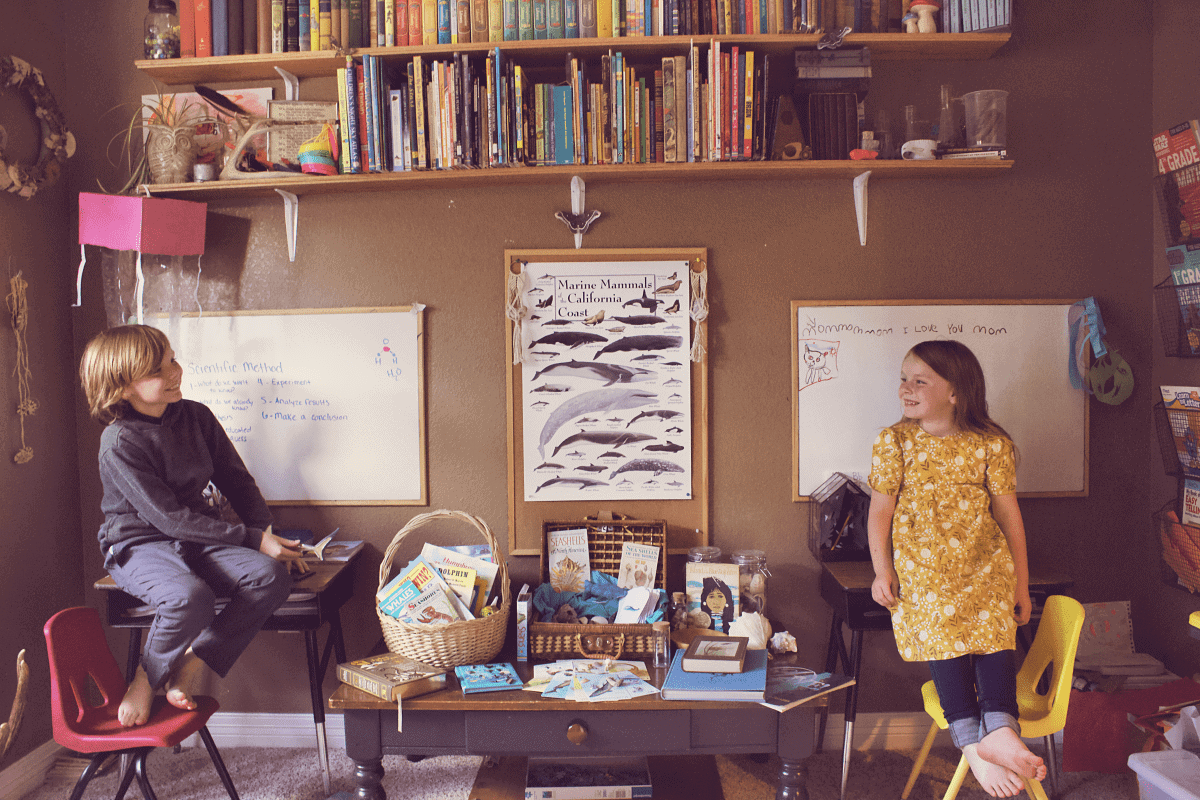
Lessons from our garden
One of our favorite sources for interest-led learning is our backyard garden. As simple as it sounds, a backyard garden is an endless source or incredible lessons and activities. We do botany studies as we learn about seeds sprouting, how pollination happens, and how we get fruits, vegetables, and flowers. Last year, our garden provided us with an abundance of hands-on science lessons with our sunflowers and luffa plants. I’m certain that our sunflower dissection will go down as a favorite “Science Friday” (more on that HERE).
Through gardening, my children learn about pollinators, all kinds of insects, seed saving, composting, and soil composition. They broadened their palates by tasting the wide variety of veggies, herbs and plants we grew. Recently, our garden studies went to the microbial level when we broke out the biology microscope and searched a soil suspension for nematodes and other microscopic life.
You can provide a rich and diverse education for your children, right from your own backyard. When you tune your own mind and heart to be constantly curious, it will unlock a universe of learning potential.
To see a World in a Grain of SandAnd a Heaven in a Wild FlowerHold Infinity in the palm of your hand…”– William Blake, Auguries of Innocence
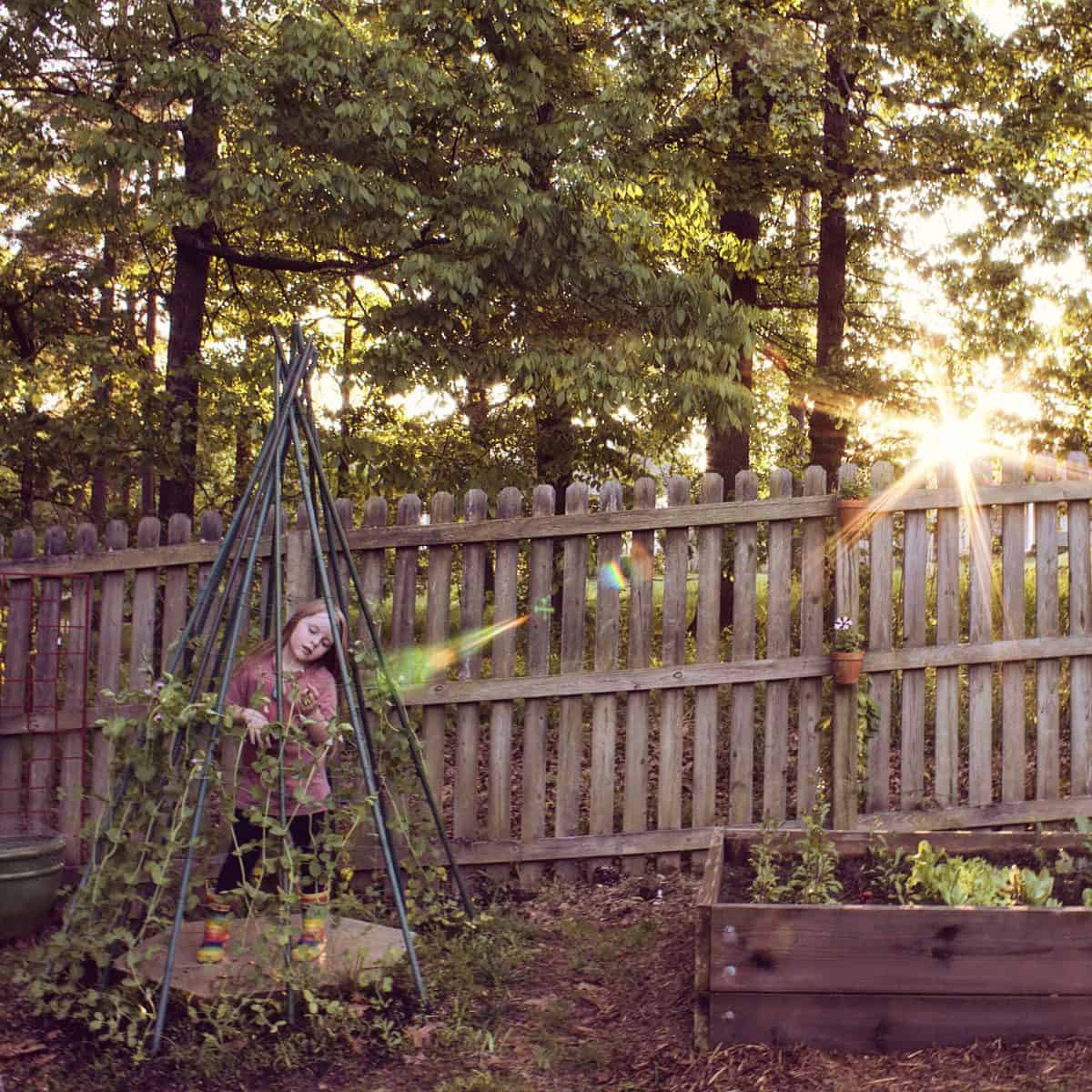
How interest-led learning is all-encompassing
Interest-led learning is not a narrow education. While it may be one overarching topic, it can encompass so much and can be expanded to fit multiple children, in multiple age groups, and span multiple subjects. The only limit is your own creativity!
What does interest led learning look like?
So, what does it look like to start with a child’s interest and structure homeschooling lessons around that topic? How do you incorporate all the different subjects they need to learn? Let’s take the example of gardening:
- Science – seed growth, leaf types, pollination, soil content, composting, fertilization, growing the same plant in different soil types or lighting levels, etc.
- History – the history surrounding the cultivation of plants – ancient civilization and Indigenous gardening techniques, crop rotation, slash and burn, the movement of seeds around the globe, the rise and fall of cash crops, etc.
- Language arts – gardening picture books, reading and narration of nature/garden inspired books, create a fictional story that takes place in your backyard garden, craft a report about the garden at the end of the season, etc.
- Math – seed counting and sorting, plotting how many seeds sprout and graphing production results, chart the color of zinnias that bloom, measure daily growth, older students can work on planning out square foot gardening, measure garden space, determine how many plants can be grown, etc.
- Foreign language – learn the words for the plants, vegetables, flowers, etc.
- Miscellaneous – make natural dyes with flowers from the garden, eat a meal entirely from the garden (culinary arts), produce something for a local farmers market and let the kids take the lead (entrepreneurship), create a garden space just for the kids and step back, practice floral arrangements, create nature collages, go on a color scavenger hunt, etc.
When you are genuinely interested in one thing, it will always lead to something else.” – Eleanor Roosevelt
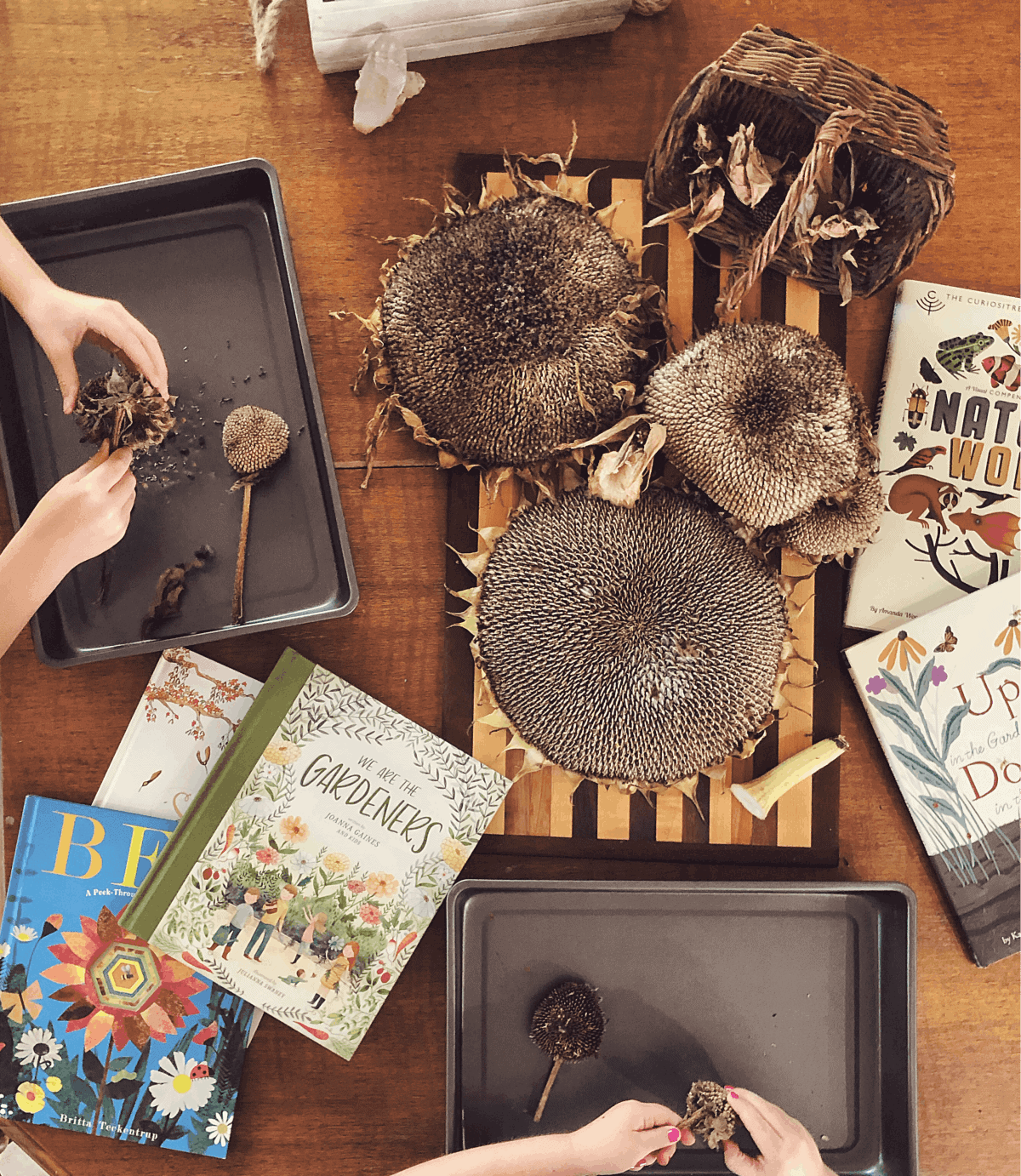
Next up
In our homeschool, we are currently taking an extended dive into ocean studies. Why? Because my son as expressed interest in being a marine biologist and loves the ocean! His current favorite book is one about Jacques Cousteau in the WhoHQ series.
We are also reading Island of the Blue Dolphins, the Burgess Seashore Book, and A Seal Called Andre. Up next: Pagoo, 20,000 Leagues Under the Sea and Voyage of the Dawn Treader. Disney Plus has come in handy with all of the ocean documentaries and we were absolutely enthralled with a National Geographic documentary about a voyage to the bottom of the Mariana Trench.
You are not alone
This homeschooling journey can be a hard one and may feel lonely at times. However, I promise you that you are not alone. Interest-led learning is an easy way to infuse joy, passion and excitement in your education process. It’s a wonderful way to show your child how much fun it is to follow their curiosities and an amazing way to really get to know them and their interests.
And if you’re ever feeling lonely or have questions on where to start or how to do this, there is a beautiful and welcoming homeschool community out there. I, personally, am here to talk anytime you need to. Thanks for reading, friends!
Be sure to check out my article about crystal digging and how it’s a great hands-on geology lesson!
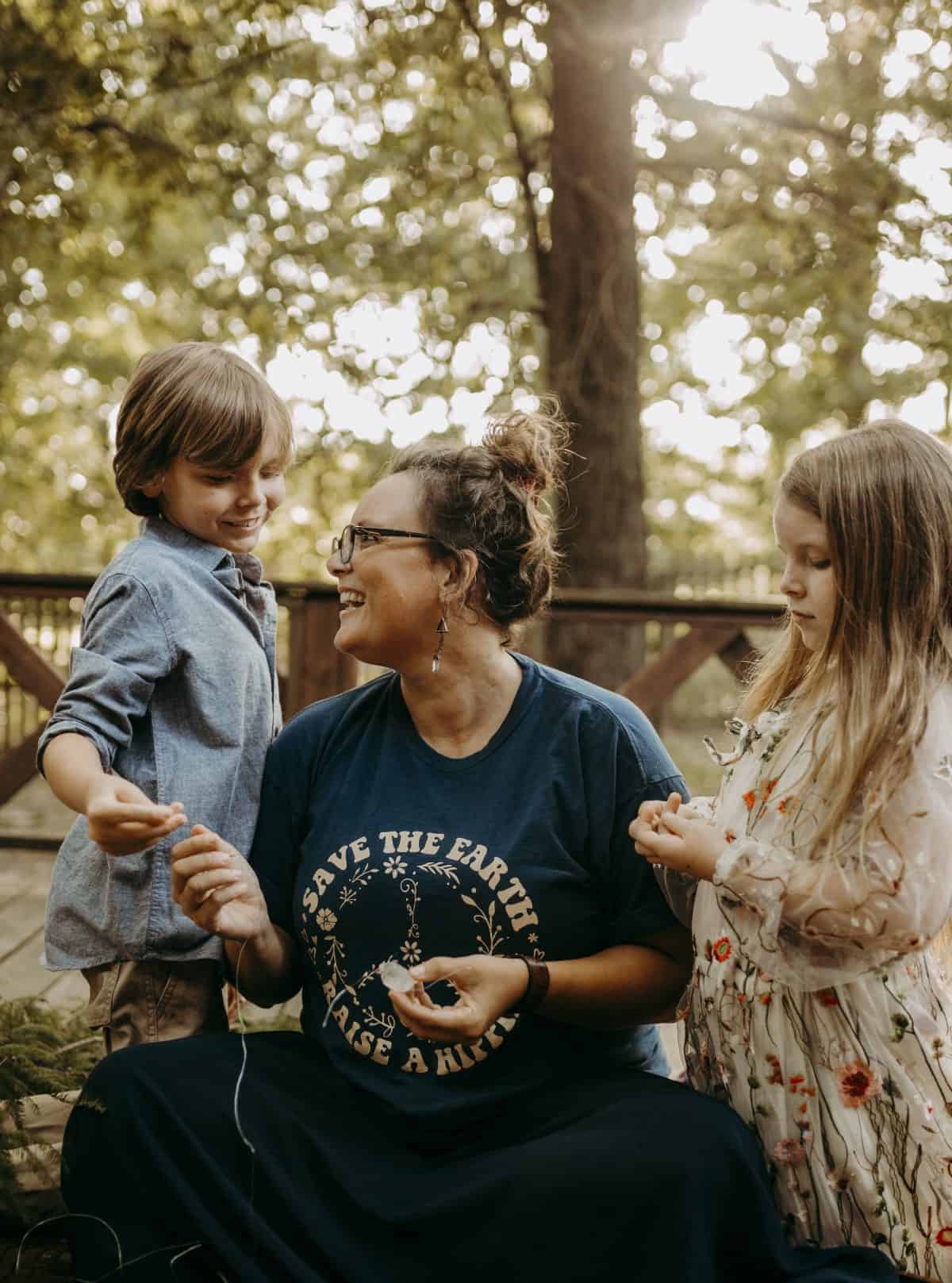 Photo by Tiffany of Three Moons Photography
Photo by Tiffany of Three Moons Photography
Are you homeschooling this year?
Are you doing any interest-led learning?
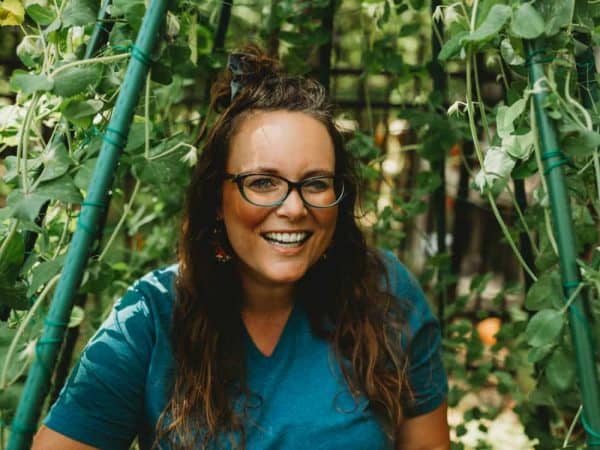
About Nichole
Nichole is mama to two incredible adventurers, an older boy and a younger girl. They are in their sixth year of homeschooling. She’s married to her best friend and they share a mutual love for the outdoors. An Iowan native now living in the south, she is happy to claim Arkansas as home. She is a wanderlust (and coffee) fueled, fearless, road tripper who has been known to take off for epic adventures at a moment’s notice. Hiking and camping (of the backpacking variety) and crystal digging are a few of their favorite family activities. You can find her in the woods somewhere, probably up a creek, and jumping off waterfalls.
You can find more from Nichole online in the following locations:
Website: www.luckeywanderers.com
Instagram: @coleyraeh
RWMC posts: Nichole








Great read!!! Thanks for sharing such a great blog.
I love how inspiring and down to earth you are. What I would love is to find a good way to “ask” our kids what they are interested in. Sometimes it like “I don’t know.” Any suggestions?
I’m currently home schooling my grandson but I don’t understand most of it and he is not interested in most of it